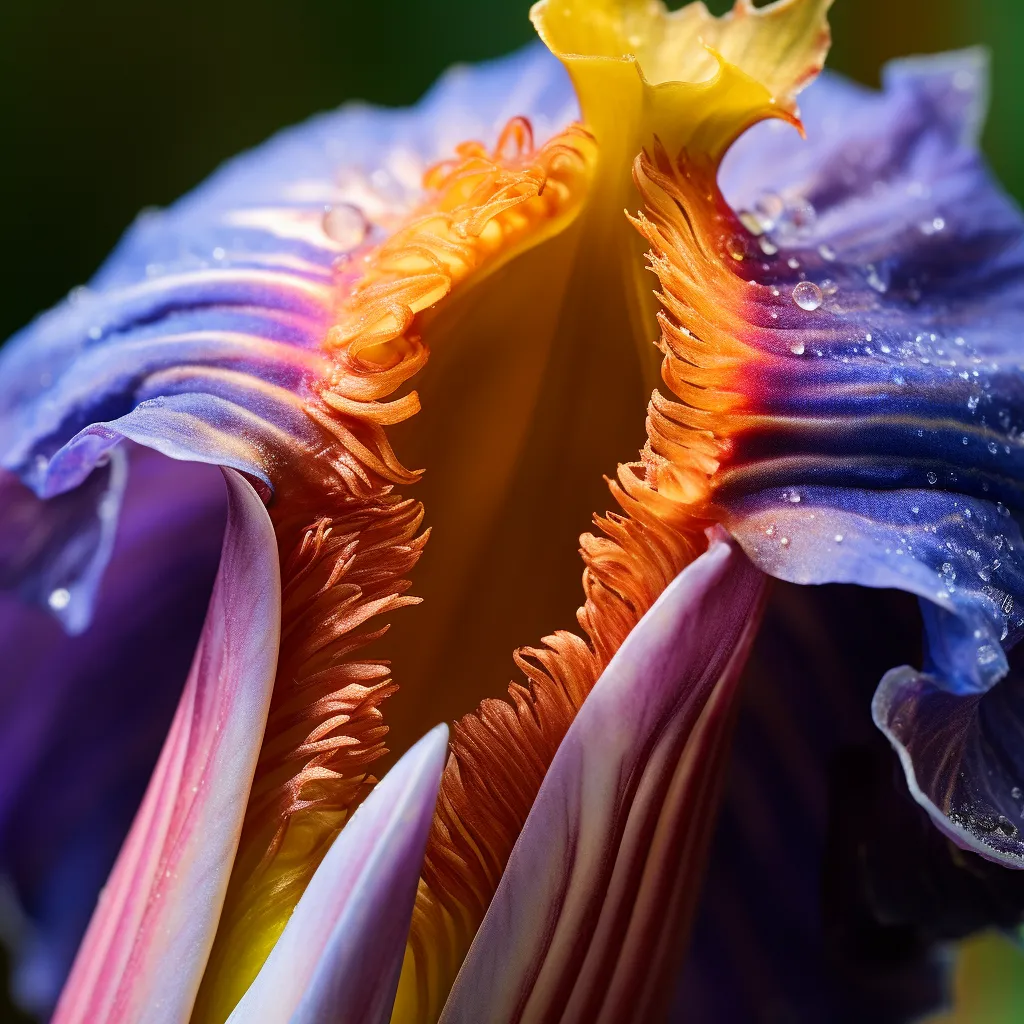Story of Day :
Contents
Iris Lutescens (Crimean Iris) Plant Care Tips
Introduction
Welcome to the world of Crimean irises, also known as Iris lutescens! These charming flowers with their striking colors and delicate petals are a favorite among gardeners.
If you’re planning to grow this beautiful plant in your garden, here are some essential care tips that will ensure its healthy growth and vibrant blooms.

Choose the Right Location
The first step in caring for your Iris lutescens is selecting an appropriate location for planting.
These plants thrive in full sun but can tolerate partial shade.
Make sure the area receives at least 6-8 hours of sunlight each day.
Soil Preparation
Criminal irises prefer well-drained soil with a pH level between 6.0 and 7.5.
Before planting, amend the soil with organic matter such as compost or aged manure to improve drainage and fertility.

Tips:
- Avoid heavy clay soils that tend to retain water.
- Add sand or perlite if your soil is not well-draining.
- Avoid using excessive fertilizer, as it can lead to weak growth and fewer blooms.
Planting Iris Lutescens Bulbs/Rhizomes
The best time to plant Crimean iris bulbs or rhizomes is during late summer or early fall, approximately six weeks before the first frost date in your region.
Follow these steps for successful planting:
- Dig a hole that is wide and deep enough to accommodate the rhizome, usually around 4-6 inches deep.
- Place the rhizome horizontally in the hole, ensuring that the bud is facing upwards.
- Cover the rhizome with soil, leaving approximately one-third of it exposed above the ground.

Watering
Iris lutescens plants require regular watering to establish strong roots.
Water deeply once a week during dry spells, providing enough moisture to penetrate at least 6 inches into the soil.
Be careful not to overwater, as excessive moisture can lead to root rot and other fungal diseases.
Tips:
- Water early in the morning or late in the evening when evaporation rates are low.
- Avoid overhead watering as wet foliage can encourage disease development.
Mulching

Mulching helps retain moisture, suppress weed growth, and regulate soil temperature.
Apply a layer of organic mulch such as wood chips or straw around your Iris lutescens plants while keeping a gap around their base for air circulation.
Avoid piling mulch directly against the stems as it can cause rotting or disease issues.
Fertilizing
A balanced fertilizer with an NPK ratio of 10-10-10 or similar will provide adequate nutrition for your Iris lutescens plants.
Apply fertilizer once in early spring before new growth appears and again after flowering has finished for optimum results.
Follow package instructions for application rates specific to your plant size and age.
Tips:
- Avoid excessive use of high-nitrogen fertilizers as they can promote lush foliage but fewer blooms on iris plants.
- Consider using organic fertilizers for a more sustainable approach to gardening.
Pest and Disease Management
While Iris lutescens plants are relatively resistant to pests and diseases, it’s essential to monitor them regularly for any signs of trouble.
Common issues include iris borers, aphids, slugs, and fungal diseases such as leaf spot or root rot.
Apply appropriate treatments or consult with a local nursery if you notice any problems.
Dividing Iris Lutescens
Over time, your Iris lutescens plants may become overcrowded and produce fewer flowers.
Dividing the rhizomes every 3-4 years will rejuvenate the plant’s vigor and promote better flowering.
The best time to divide is during late summer or early fall when the plant is dormant.
- Carefully dig up the rhizomes using a garden fork or shovel.
- Gently separate the healthy divisions with roots attached.
- Trim back any damaged or diseased parts of the rhizome before replanting.
- Follow planting instructions mentioned earlier in this article for each new division.
In Conclusion
Iris lutescens (Crimean iris) are delightful additions to any garden with their vibrant colors and unique beauty.
By following these care tips on location selection, soil preparation, watering, mulching, fertilizing, pest management, and dividing techniques; you’ll be well on your way to growing flourishing Crimean irises that will brighten your garden year after year!